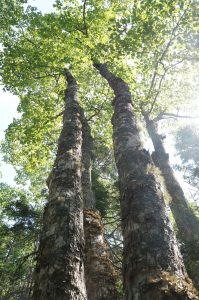 Of all of the existing and potential uses of forest products, use of wood in construction is seemingly the most compatible with using our forests and forest products to sequester carbon and building on the natural strengths of a species diverse, multi-aged Acadian forest.
Of all of the existing and potential uses of forest products, use of wood in construction is seemingly the most compatible with using our forests and forest products to sequester carbon and building on the natural strengths of a species diverse, multi-aged Acadian forest.
A multi-authored, just-off-the-press, open-access, peer reviewed paper on The wood from the trees: The use of timber in construction covers a wide range of topics related to the use of timber in construction.
“This review article aims to provide a big-picture view of the environmental impacts of using timber in construction, and the choices that influence this. The novelty of this article is that it succinctly covers current knowledge and provides important insights at multiple scales across a range of disciplines, all of which contribute to the environmental impact of timber use: trees as a resource, wood cell biology and molecular structure, forestry and management practices, processing into products, modification for durability, design and engineering for full-scale applications, end-of-life considerations, and global use, trade and policies. Following this assessment, we also highlight directions for future research that will shape environmental outcomes for constructing with such natural materials.”
One of the sponsors was the Natural Sciences and Engineering Research Council of Canada.
The paper focusses on the European forests and forest industry and global markets, but most is relevant to Nova Scotia. At least I hope that we have not degraded our forests to the extent that we can no longer think of a revitalized Acadian forest and timber industry as an option for the future.
View The wood from the trees: The use of timber in construction by Michael H. Ramagea et al. Renewable and Sustainable Energy Reviews Volume 68, Part 1, February 2017, Pages 333–359.
